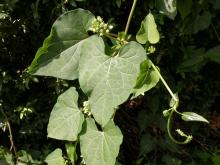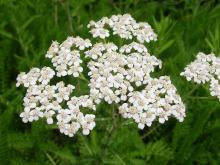Wildflowers, Grasses and Other Nonwoody Plants
Media

Species Types
Scientific Name
Podophyllum peltatum
Description
Mayapple is a common spring wildflower that makes its biggest impression with its leaves, which resemble umbrellas arising from a single stalk. It often grows in colonies.
Media

Species Types
Scientific Name
Dicentra cucullaria
Description
Dutchman’s breeches, a common spring wildflower, is easy to identify. Note its bluish-green, fernlike leaves and its leafless stalks, from which dangle several white flowers shaped like old-fashioned knee breeches.
Media

Species Types
Scientific Name
Daucus carota
Description
Queen Anne’s lace is many things to many people — roadside wildflower, noxious introduced weed, wild edible, medicinal herb, delightful cut flower. In Missouri, it blooms May through October.
Media

Species Types
Scientific Name
Persicaria amphibia (formerly Polygonum amphibium)
Description
Water smartweed can live submerged in water, or on wet banks or other soggy ground, yet it can also live in merely moist areas. The stems often sprawl as they grow, taking root at the swollen nodes. The small, pink flowers develop in long, erect clusters.
Media

Species Types
Scientific Name
Cynanchum laeve
Description
Bees, butterflies, and other insects love its nectar, but sand vine is also a problem weed that can be difficult to eradicate. Some people cultivate it as an ornamental. Beekeepers value it as an excellent honey plant.
Media

Species Types
Scientific Name
Achillea millefolium
Description
Native to North America, Europe, and Asia, yarrow has been used for medicine and magic for millennia. This aromatic plant has fine, hairy, fernlike leaves and flat-topped clusters of little white flowers.
See Also
About Wildflowers, Grasses and Other Nonwoody Plants in Missouri
A very simple way of thinking about the green world is to divide the vascular plants into two groups: woody and nonwoody (or herbaceous). But this is an artificial division; many plant families include some species that are woody and some that are not. The diversity of nonwoody vascular plants is staggering! Think of all the ferns, grasses, sedges, lilies, peas, sunflowers, nightshades, milkweeds, mustards, mints, and mallows — weeds and wildflowers — and many more!





















